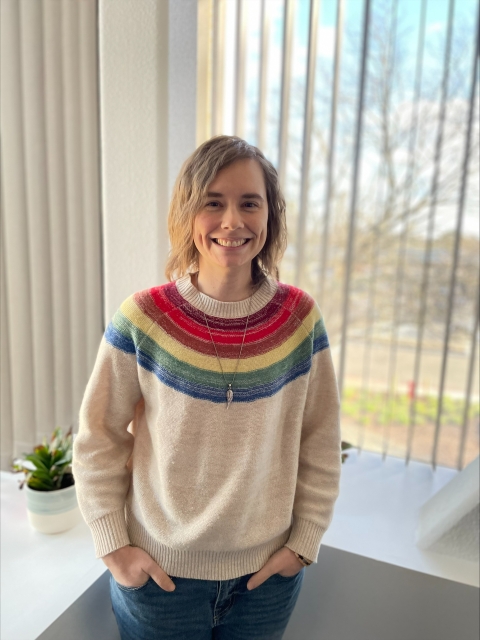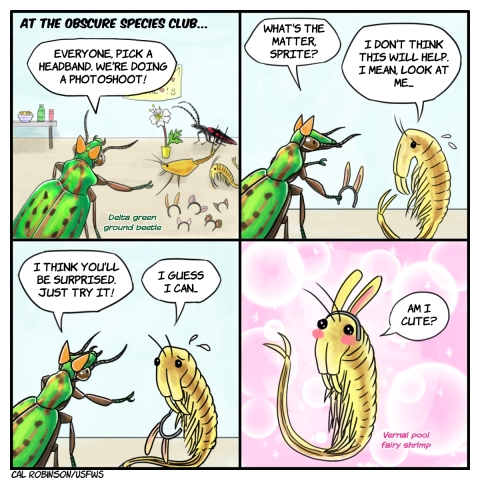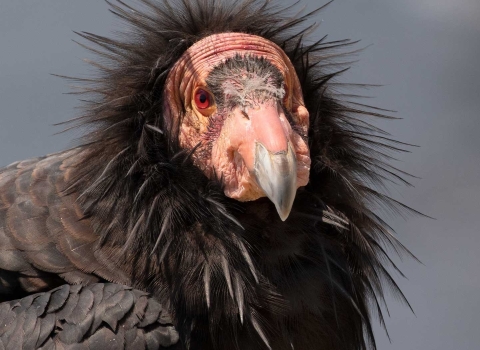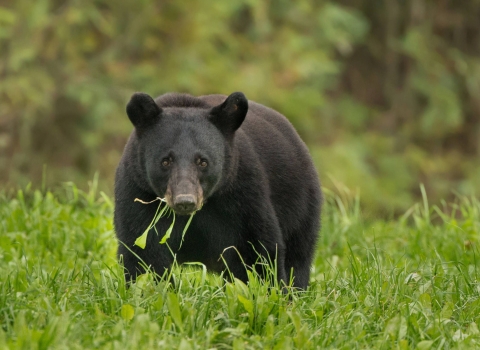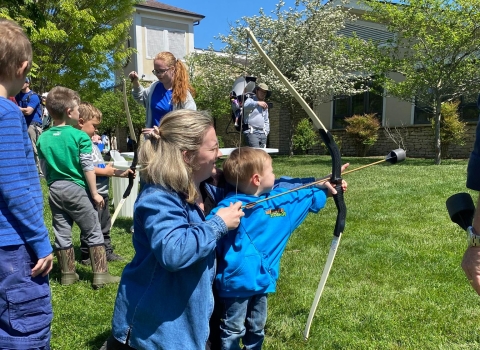The Basics:
- Name: Cal Robinson
- Position: Public Affairs Specialist
- Office: Sacramento Fish and Wildlife Office
- Hometown: Lake Stevens, WA
- Education: BA in Linguistics from Western Washington University, MA in Biology from Miami University
Q&A
Tell me about how this project started.
This year, we’re celebrating the 50th anniversary of the Endangered Species Act. The ESA is an incredibly effective law that has protected 99% of the listed plant and animal species from extinction. Thanks to work done by hundreds of partners under the ESA, many species have made inspiring comebacks. Today, the challenges species are facing are even greater, which makes the ESA more important than ever.
We wanted to mark this important milestone in ESA history by creating a series of portraits recognizing eight listed species. These species have been the focus of intense recovery efforts working with local communities, state and federal agencies, Tribes, conservation groups and private sector partners. These species, and this art, represents the collaborative spirit that makes the ESA successful.
What was your goal with each species portrait?
People tend to protect what they love and feel connected to, but most people will never see an endangered species in the wild. When people do encounter animals in the wild, we usually only see the animal’s cautious or scared face, which can make that connection challenging.
As the artist for this project, my goal was to connect viewers to the more complex self within each of these species, the someone within every creature, the personality that comes out when humans aren’t watching. To achieve that, I focused on the eyes and subtle cues in their body language and expression. I also used dynamic lighting and color to invite the viewer to look a little longer and make that connection with the subject.
And, of course, there is a plant in this series, the Kaʻū silversword. Plants are vitally important to our landscapes and are recognized for their beauty, but it’s especially challenging for the public to connect emotionally with plants. For this portrait, I tried to evoke an emotional response by creating an atmosphere of mystery that reveals the plant’s interesting and unique presence in its environment.
How can art help people connect with nature?
Art has been used for thousands of years to tell stories and evoke emotions without words. There’s no language barrier. Today, many people don’t have easy access to nature, and most of us will never see an endangered species. This art brings the species into people’s homes, onto their screens and into their hearts. I hope that my art helps people connect with these species no matter where they live and inspires them to learn more about the species and understand why protecting them is so important.
When I see conservation artwork, I think about what the artist is trying to say, what emotions they felt creating the piece, what was so important for them to spend hours of their life focusing on bringing some singular image to life. When conservation organizations communicate their work through art, I think that resonates with viewers in a way other methods of communication don’t.
How do you describe your artistic style for this project?
Since connecting the viewer to the subject was my biggest goal, pet portraiture was my main inspiration for the style I chose for this series. In pet portraiture, it’s essential that the portrait captures the personality of the subject so pet parents can see the soul of their pet in the portrait. I wanted to take that same care for folding personality into each of these endangered species’ portraits. I ended up going with a classic painterly style.
How did you create the portraits?
I used a digital art program and a drawing tablet to create the paintings. My approach for digital painting is not very different from when I do a traditional painting. I collected many reference images that showed a variety of possibilities for different lighting, color palettes, poses and facial expressions. All of these inspired me as I developed the form of the final piece.
How did you build your career as an artist and communications professional?
I’ve created art since I was old enough to, and it’s the one hobby I’ve stuck with throughout my life because it’s a fun way of expressing myself. Following that, I developed an educational background in linguistics and biology, a work background in public lands, and a hobby of story writing. I found these skills all intersect in the field of conservation interpretation, which is the practice of connecting others to nature and conservation topics through storytelling and personal exploration. While I don’t think of myself as a career artist, art can play an incredible role in connecting with and educating audiences on complex scientific topics. I’m eager to bring art into my communications work whenever there’s a place for it.
How did you get to the U.S. Fish and Wildlife Service?
I started my career working as a seasonal recreation technician for the U.S. Forest Service. I worked in that role for five seasons in Washington and California until I had hiring authority under the Land Management Workforce Flexibility Act. I had some fabulous supervisors on Cleveland National Forest who supported me working on interpretation materials like signs and handouts, so I was able to get a lot of invaluable experience. While I was working, I completed a master’s degree program through Project Dragonfly at Miami University with a focus on conservation interpretation.
I joined the U.S. Fish and Wildlife Service about 18 months ago as a public affairs specialist. In this role, I do everything from writing press releases and articles on our work to creating comic strips highlighting obscure species protected under the ESA and infographics that highlight ecosystems. I get to wear different hats and develop my skills across writing, art, journalism, photography, project planning and public outreach. It’s a great position for learning about the different facets of the Service, too!
Have you completed any other art-focused projects while working for the federal government?
The Service has given me plenty of opportunities to do artwork, like infographics on wildfire and healthy forests, pollinator coloring pages and a comic series. Before I came to the Service, I designed a large series of interpretive signs for Cleveland National Forest that included original artwork. I also designed a brochure for a plant identification walk that included artwork of several species on Mount Laguna. You can also find nature murals I’ve painted in the Forest Service ranger station in Alpine, CA, in the Cleveland National Forest supervisor’s office in San Diego and at the Sacramento Fish and Wildlife Office.
What do you find motivating working for the U.S. Fish and Wildlife Service?
The Service has been extremely supportive of folding art into its messaging. This helps us share our important mission and work with new audiences. Every day, the work I do is focused on improving the world and protecting plants and animals from being lost to history. I’m so grateful I get to do something meaningful with my time. Not just that, but my colleagues are all also working together toward conservation goals and species recovery because it’s important to them. The Service is full of so many passionate people who believe in our mission. It’s a very unifying feeling.
Where do you find inspiration as an artist?
By far, my biggest inspiration is other artists. With the internet, there is an endless well of creativity and skill is just a few clicks away. There are so many examples of art being used in science and conservation to inspire people’s connection with nature, so I try to learn by analyzing the works of conservation artists of today and of the past that I felt were particularly effective. My other biggest artistic inspiration is fiction and storytelling. In addition to wildlife, I draw a lot of human characters from whatever I’ve been watching or my own stories. It’s fun when I can apply something stylistically from cartooning to realism or the other way around and see what happens.
Want to see and read more of Cal’s work? (links)
• Obscure Species Club comic strip
• Healthy Forests article and infographic
• Conservation Corner: Riparian brush rabbits
• Pollinator Color-by-Number coloring sheets


